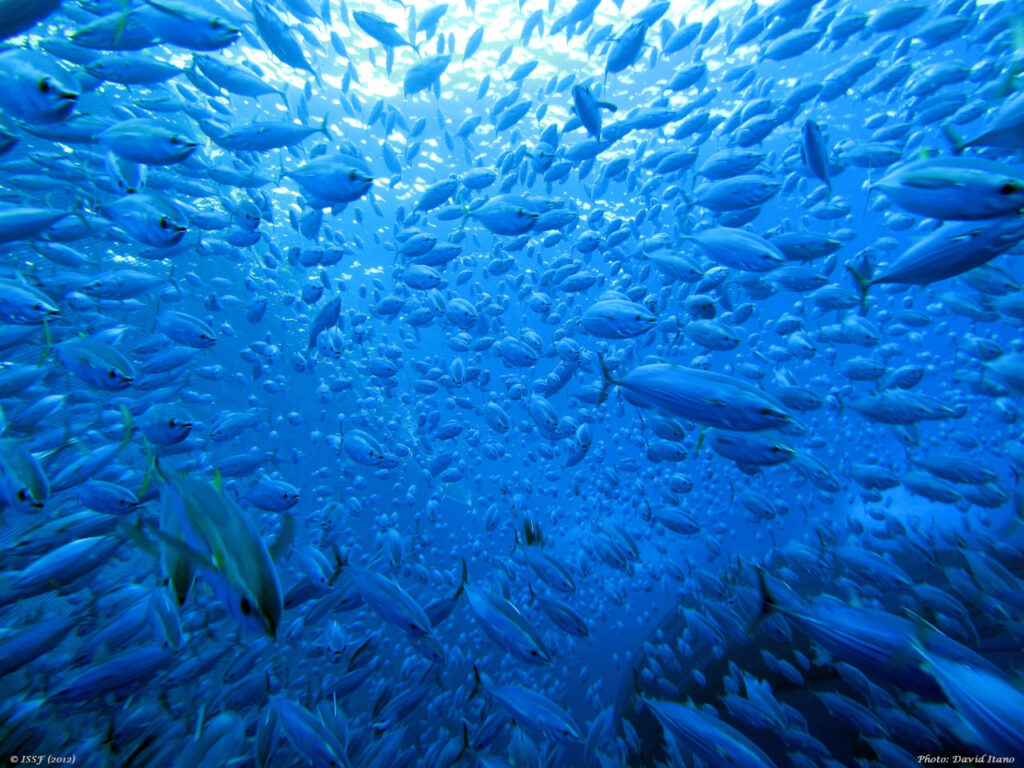Fishing and climate change: what impact on ocean carbon sequestration?
An international team led by researchers from the University of Montpellier, CNRS, World Maritime University (WMU) and the University of California has quantified the past, present and future impact of fishing and climate change on the ability of commercially important species (fish and other macro-invertebrates) to sequester carbon on the ocean floor. Their results, published in the journal Nature Communications, show that climate change would reduce carbon sequestration by commercial species by 13.5% by the end of the century. However, the impact of climate change remains much lower than that of fishing, which has already reduced carbon sequestration by 47% since 1950. These studies therefore call for more sustainable ocean management, taking into account the impact that fishing can have on carbon sequestration.

What if marine macrofauna could help sequester more carbon?
Natural Climate Solutions (NCS) have the advantage of killing two birds with one stone: limiting climate change while combating the erosion of biodiversity, thanks to the restoration, protection or better management of ecosystems such as forests. But as forests burn, the scientific community is gradually turning to the ocean to find new CNS. In their 2021 joint report, IPCC and IPBES experts suggest that the way we manage the food resources the ocean provides must evolve to help us combat climate change. But what is the link between an ocean rich in biodiversity, fishing, change and carbon sequestration? These are the questions this new study seeks to answer.
How does marine macrofauna sequester carbon?
The role of fish and macro-invertebrates (macrofauna) is far from negligible, since they are responsible for 30% of the carbon trapped by all marine organisms. Their diet, composed of carbon, is partly accumulated in their flesh, or expelled via fecal pellets. When macrofauna produce fecal pellets, die of disease or old age, the carbon contained in them sinks to the ocean depths, trapping the carbon they contain in the process. The study shows that in 1950, before the combined effects of fishing and climate change, macrofauna of commercial interest had the capacity to sequester 0.23 billion tonnes of carbon per year, 90% of which via faecal pellets.
The historical impact of fishing
Today, this macrofauna of commercial interest only traps 0.12 billion tonnes of carbon per year, 47% less than in the 1950s. "Every time fishing reduces the biomass of commercial species by 1%, carbon sequestration decreases by 0.8%", say the authors of the study. Fishing has a greater impact on carbon sequestration via the fall of carcasses than via the fall of fecal pellets. "This is linked to the fact that fishing targets the largest organisms, i.e. those most likely to die of old age. In addition to the impact this may have on carbon sequestration, this reduction in the arrival of carcasses on the ocean floor is also synonymous with a reduction in the arrival of food in the abyss, carcasses being a delicacy for the organisms that live there. So we may be starving a whole host of abyssal organisms we barely know about", they conclude.
Impact of climate change: the snake biting its own tail
The more climate change worsens, the weaker the capacity of commercial species to sequester carbon will be, thus exacerbating global warming. If the Paris Agreement is respected (+1.5°C), sequestration will drop by 4% by 2100, but by up to 13.5% if temperatures rise by +4.3°C. For each degree of warming, a reduction of 2.46% is expected. Thus, fisheries and climate combined could reduce sequestration by 56% by 2100 compared with 1950.
A new natural solution for the climate?
The study quantifies for the first time the benefits of restoring fish and macroinvertebrate populations: up to 0.4 billion tonnes ofCO2 sequestered per year, a potential comparable to that of mangroves. Over several decades, this would represent 240 billion tonnes ofCO2, equivalent to six years of human emissions. CNSs linked to the restoration of commercial species populations therefore appear to be an interesting avenue, but their contribution to meeting climate objectives will remain minimal if these measures are not considered complementary to a drastic and immediate reduction in greenhouse gas emissions. The researchers also highlight the many uncertainties surrounding this new field of research. "For example, the effect of restoring commercial species on their prey, which are also involved in sequestration, remains unknown. While it is difficult to conclude that this is a new CNS, our results nonetheless illustrate the importance of more sustainable ocean management to avoid the annihilation of a carbon sink whose protection could bring benefits for biodiversity and climate", they conclude.
Practical information:
- Publication date: October 27, 2025
- Full article: here